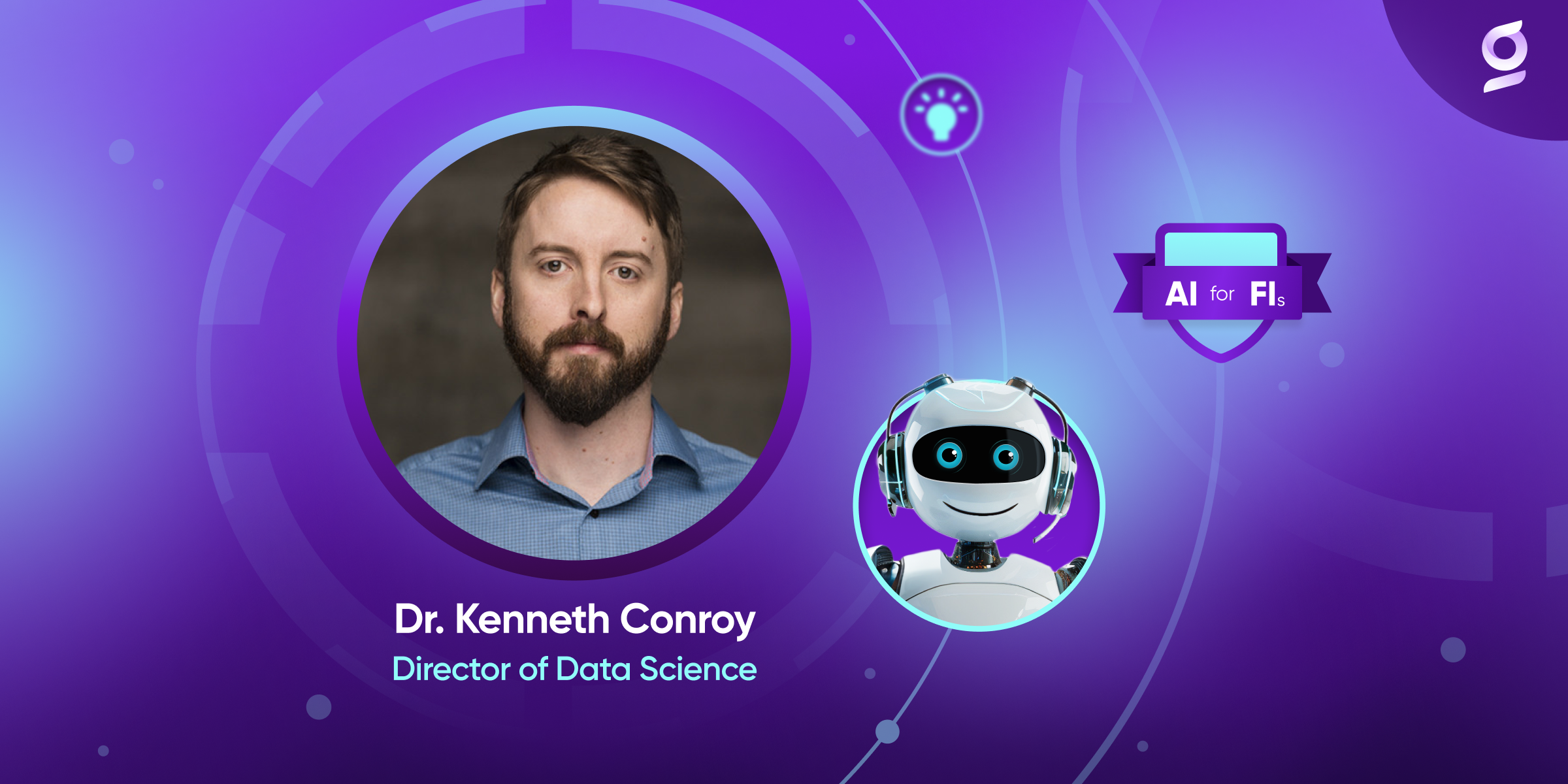It’s no secret that AI has exploded in popularity, and nearly every technology vendor is offering some kind of AI solution. CCaaS and customer experience vendors are talking about AI even if they didn’t offer it as a part of their product a year ago. This makes sense: The opportunities for efficiency gains and cost-savings of these intelligent assistants are huge, and hardly anyone wants to miss out on these potential gains.
But AI is also a complex and wide-ranging topic, which can make it difficult for non-experts in AI to understand the differences between what various vendors are offering, and which options might be better for their organization.
To cut through the noise and simplify the AI landscape that credit unions and banks have to evaluate today, we sat down for an interview with Glia’s in-house data scientist, Dr. Kenneth Conroy.
Dr. Conroy, thanks for your time. To start us off, what do you think is one of the most crucial things that a financial institution without much AI experience should be looking for in a potential AI product?
Dr. Conroy: Well, one thing I would certainly recommend to anyone new to the AI world is finding a pre-built solution, rather than a building kit that many CCaaS vendors offer. The difference is quite significant, though it’s often downplayed in the industry. It’s sort of like comparing a fully assembled car to a box of car parts.
Can you elaborate?
Dr. Conroy: Pre-built intelligent assistant solutions, like the Glia Virtual Assistant (GVA), are like a car that’s ready to drive off the lot. It’s been built, tested, and optimized specifically for the roads of the financial services industry. On the other hand, building kits from CCaaS vendors are essentially a box of parts for you to build your own car from scratch.
So, what does this mean in practical terms for financial institutions?
Dr. Conroy: It means a world of difference in terms of time, resources, and effectiveness. Building a bot from a kit is an enormous undertaking, especially for an organization without much AI experience. They come with little to no pre-training or pre-built topics. Each institution essentially starts from zero, which requires a massive investment of time and data.
You brought up data, and since it’s your field of study, let me ask you: How crucial is it for developing AI?
Dr. Conroy: Absolutely crucial. Data is like the brain that powers an AI, and there’s no shortcut to creating a comprehensive pool of data points. At Glia, our AI model has been trained on over 16 million example utterances, all specific to consumer banking. To put that in perspective, a single customer request, like asking for account access, has nearly 8,000 variations in our model.
That’s impressive. How does this compare to starting with a bot-building kit?
Dr. Conroy: There’s no comparison. With a bot-building tool, you’re starting with zero data. While it might be relatively easy to build a simple bot that handles 10-20 queries, it becomes exponentially harder to create a more complex intelligent assistant that can handle hundreds of diverse inquiries. Our data advantage means that the GVA has a high level of understanding of customer inquiries right out of the box.
Why do you think CCaaS vendors choose to offer bot-building kits instead of pre-built bots?
Dr. Conroy: It’s primarily because they serve multiple industries. The conversations a bot needs to handle for a dog food company are vastly different from what a credit union requires, for example. The amount of data they’d need to pre-build a chatbot for all these industries would be way too vast for one business to have. Building a pre-built bot for every industry they serve simply isn’t scalable for them, while we focus on a single industry which gives us that ability to pre-build.
So, how important is it for financial institutions to have a bot made just for their industry?
Dr. Conroy: It’s a game-changer. Our GVA has been used by hundreds of banks and credit unions, so it’s been battle-tested in real-world financial scenarios and is already primed and ready to answer questions in that industry. Financial institutions can deploy a sophisticated virtual assistant quickly, without the need for extensive development or data gathering on their part, and guarantee it will actually get them the results they paid for.
What about customization? Do you potentially lose out on that customization angle if you go with a pre-built bot?
Dr. Conroy: Not at all. While our GVA comes pre-built with a wealth of financial services knowledge, it still offers customization options. The key difference is that institutions aren’t starting from scratch. They’re building on top of a robust, industry-specific foundation.
Finally, what would you say to a financial institution that’s considering building their own bot from a CCaaS toolkit?
Dr. Conroy: I’d urge them to carefully consider the resources required. It’s easy to underestimate the complexity of building a truly effective virtual assistant. With the GVA, you’re leveraging years of specialized development and millions of real-world interactions. It’s not just about getting a bot up and running; it’s about providing a virtual assistant that can genuinely understand and assist your customers from day one.





